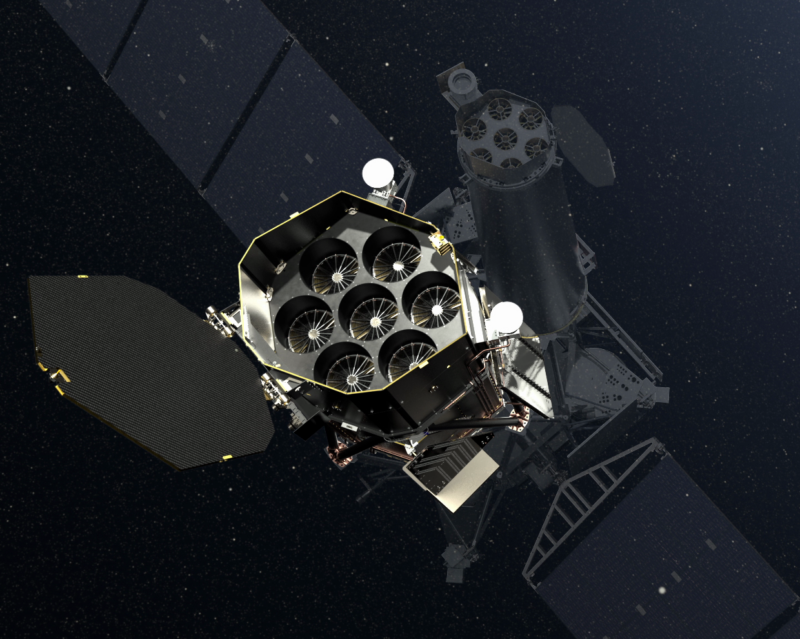
Enlarge / Artist's impression of the Spektr-RG spacecraft carrying the German ‘extended ROentgen Survey with an Imaging Telescope Array’ (eROSITA) X-ray telescope and its Russian ART-XC partner instrument. (credit: German Aerospace Center)
Launched in 2019 on a Proton rocket, the Spektrum-Röntgen-Gamma telescope is arguably the most significant space science mission built and flown by Russia since the dissolution of the Soviet Union more than three decades ago.
The 1.2-ton Spektr-RG spacecraft, located about 1.5 million km from Earth in a halo orbit, is an advanced X-ray observatory designed to detect and map galaxy clusters as well as supermassive black holes. The concept for the spacecraft originated during the Soviet Union, but like a lot of major space projects, it was set aside during the USSR's collapse.
The Russian space corporation, Roscosmos, eventually picked up the idea and partnered with the German space agency, DLR, on the mission. Under the plan, Russia would build the Spektr-RG spacecraft and launch it, whereas the Germany-based Max Planck Institute for Extraterrestrial Physics would design and build the primary instrument on board, named eROSITA. This instrument took its first observations in late 2019 and was intended to conduct a seven-year survey.
No comments:
Post a Comment